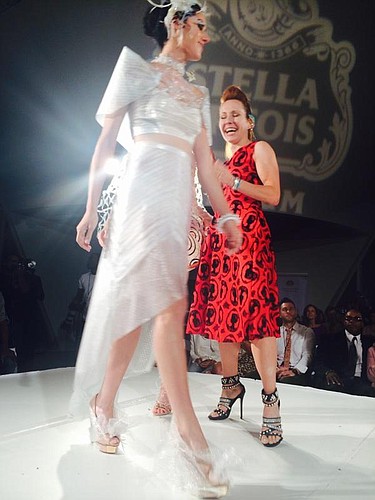- February 22, 2025

Gail Warner, of Ormond Beach, gets excited when her husband brings home a box of discarded six-pack rings or other items normally considered trash.
“It’s better than Christmas,” she said recently, her eyes lighting up with the thought.
Warner uses the materials to make dresses for runway shows, which are occurring in more and more cities to raise money for charities and encourage “up-cycling,” or finding a use for a discarded item.
“It’s a trend that is creeping into the fringes of the mainstream,” Warner said.
Warner is currently designing a dress for a show at Seaworld Ports of Call, an events complex, on Feb. 6. Now in its third year, the show is called Trash 2 Trends and raises money for Keep Orlando Beautiful.
The dress that Warner is making for the event is made of more than 600 plastic six-pack rings, seven vintage place mats, three CDs and 79 foils from wine bottles.
She’s developing an eye for trash.
“Aren’t these beautiful?” she said, closely examining the design on a wine foil.
She working on another dress made of shredded pages of magazines and paper that is used in packaging for her husband’s suits.
“He knows better than to throw anything away,” she said.
“It would make me cry to see how much is used just to ship a product and then go to the landfill.”
GAIL WARNER, Trash 2 Trends participant
Other family members also help. Her mother called her from a rummage sale asking if she wanted 24 shiny place mats.
Warner has used bubble wrap, shower curtain rings, plastic forks and appliance tubing in her designs. Once, she jumped too far ahead, when she used tubing from a new dehumidifier.
“My husband said, ‘Um, I think we’re going to need that,’” she said.
Warner, who has her own public relations firm, has no background in fashion and does not sew, but says her lack of training is beneficial.
“I don’t know what I don’t know,” she said.
Warner discovered the trash-to-dress runway shows in her former home of Charlotte, North Carolina. She was intrigued, wondering what the various parts of the dress were.
Working with the material makes her realize how much trash is generated in the country.
“It would make me cry to see how much is used just to ship a product and then go to the landfill,” she said. “I can collect the material I need in a shockingly short amount of time.”
The dresses are for the runway, and not actually wearable. Women have offered to buy them, but she explains that you can’t sit down in them, and would need help going to the bathroom.
Her friend, Laura Greer, models the clothes, and enjoys seeing what Warner comes up with.
“My husband says nobody wears trash like me,” she said, laughing.
Warner enjoys talking to the other designers at the shows about how they made their dresses. She likes the problem-solving aspect, getting dresses to hang correctly using zip ties, glue or whatever she can find.
“I’m like Macgyver,” she said, referring to the old TV show.
She’s excited about the next dress she has in mind. She lives near a construction site, and the foreman said she can have all of the discarded wires.
She said she was going to use the wire to make a skirt, and it’s going to billow like a cloud.
“I just need to figure out what kind of structure it will be on,” she said.